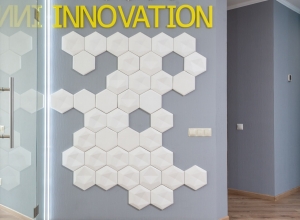please click here:
https://www.plastic-material.com/pa12-material.html
PA12 material, also known as Polyamide 12, has become one of the most influential engineering polymers in advanced manufacturing, especially in industries pursuing lightweight construction, chemical stability, long-term durability, and precise dimensional accuracy. While originally designed for niche industrial applications, PA12 is now at the heart of additive manufacturing, automotive piping systems, sports equipment, electrical components, aerospace parts, medical devices, and numerous consumer products.
This article offers a comprehensive deep dive into PA12 material—its chemistry, manufacturing methods, advantages, limitations, applications, and how it compares to other industry-standard polymers. It is written for engineers, product developers, sourcing professionals, and manufacturers who want a practical yet technically grounded resource.
Understanding PA12 Material
Polyamide 12 belongs to the nylon family, which consists of polyamides known for strength, toughness, and thermal resistance. Unlike other nylons, PA12 is characterized by a longer aliphatic chain backbone, giving it lower moisture absorption, excellent chemical resistance, and higher dimensional stability. These properties make it a preferred material where precision and reliability matter more than raw tensile strength.
Chemical Structure and Its Impact on Performance
PA12 is produced via the polymerization of laurolactam. Its molecular structure contains repeating amide groups separated by long hydrocarbon chains. This architecture results in:
-
Low water absorption
-
Flexible yet strong molecular bonds
-
Superior resistance to cracking
-
Smooth surface finish potential
-
Heat-resistant but not overly rigid morphology
The combined effect is a polymer that performs reliably in environments where temperature fluctuations, pressure, or chemical exposure challenge traditional plastics.
Manufacturing Methods of PA12 Material
PA12 is incredibly versatile and can be processed through multiple industrial methods.
Injection Molding
Injection-molded PA12 components benefit from excellent flowability, enabling complex thin-wall geometries. Its low shrinkage ensures tight tolerances ideal for mechanical connectors, electrical housings, and clips.
Extrusion
PA12 extrudes cleanly, making it the material of choice for tubes, cables, hoses, and coated wires. Automotive air-brake lines and pneumatic control tubing often rely on PA12 due to its fatigue resistance.
Powder-Based Additive Manufacturing (SLS / MJF)
PA12 is the backbone of industrial 3D printing. It is valued because:
-
Powder sinters uniformly
-
Produces consistent mechanical properties
-
Creates lightweight structures without losing toughness
-
Supports mass customization and low-volume production
Its impact in additive manufacturing has been particularly revolutionary in prototyping and short-run production.
Key Properties That Differentiate PA12 Material
1. Low Moisture Absorption
Compared with other nylons, PA12 absorbs far less moisture, ensuring:
-
Stable dimensions
-
Predictable mechanical performance
-
Longer service life in humid or wet environments
This feature alone makes PA12 a preferred material in water-related or outdoor applications.
2. High Chemical and Hydrolysis Resistance
PA12 resists fuels, oils, hydraulic fluids, greases, and cleaning chemicals. The material maintains structural integrity where many common thermoplastics degrade.
3. Fatigue and Impact Resistance
Components made from PA12 remain reliable over long cycles of vibration or bending. This is why it has become indispensable in automotive tubing and pneumatic systems.
4. Heat Stability
PA12 can consistently operate in a broad temperature range without losing elasticity or cracking. It offers a balanced thermal profile compared to more specialized engineering plastics.
5. Smooth Surface Finish
Its ability to produce smooth, uniform surfaces makes PA12 suitable for consumer products, sports equipment, and aesthetic components.
PA12 vs. Other Polymers: A Meaningful Comparison
Below is an original comparison table contrasting PA12 with PA6, PA66, and TPU, showing how it uniquely fits performance-driven applications.
Material Comparison Table
| Property / Material | PA12 | PA6 | PA66 | TPU |
|---|---|---|---|---|
| Moisture Absorption | Very Low | High | High | Moderate |
| Flexibility | High | Medium | Low | Very High |
| Chemical Resistance | Excellent | Medium | Medium | Good |
| Fatigue Resistance | Excellent | Medium | Medium | High |
| Surface Finish | Smooth | Rougher | Rougher | Smooth |
| Dimensional Stability | High | Moderate | Moderate | Medium |
| 3D Printability | Excellent | Limited | Limited | Good |
| Heat Resistance | Moderate-High | High | Higher | Moderate |
| Stiffness | Moderate | High | Higher | Low |
This table clearly shows PA12's unique position: a balanced, stable, and highly processable material.
Advanced Applications of PA12 Material
Automotive Industry
PA12 is extensively used for:
-
Fuel and brake lines
-
Pneumatic control tubing
-
Quick connectors
-
Hybrid and EV cooling channels
-
Under-hood protective components
Its resistance to salt, oils, and high pressures makes it indispensable in vehicle longevity.
Additive Manufacturing
PA12 is the leading polymer in industrial 3D printing because it offers:
-
Strong yet lightweight mechanical properties
-
High dimensional accuracy
-
Good surface aesthetics
-
Compatibility with dyeing and surface finishing
This makes it ideal for short production runs, customized consumer products, medical braces, and aerospace prototypes.
Aerospace and Defense
PA12 components are valued for:
-
Fatigue resistance
-
Temperature stability
-
Lightweight performance
-
Vibration tolerance
Ducting systems, cable ties, housings, and rapid-manufactured parts frequently rely on PA12.
Medical and Healthcare Devices
Because PA12 is biocompatible in certain grades, it is used in:
-
Catheters
-
Connectors
-
Lightweight prosthetic components
-
Surgical prototypes
Its sterilization tolerance adds another advantage.
Electrical and Electronics
PA12 is often selected for:
-
Cable insulation
-
Sensor housings
-
Connectors
-
Wire coatings
Its electrical insulation capabilities and chemical stability are vital in demanding environments.
Limitations of PA12 Material
While PA12 is powerful, it's not ideal for every application. Its limitations include:
-
Higher cost compared to common nylons
-
Lower stiffness than PA66
-
Moderate heat resistance (not for high-temperature continuous loads)
-
Requires drying before processing to avoid molding defects
-
May not match TPU elasticity in extremely dynamic applications
These trade-offs guide engineers in deciding whether PA12 is the optimal choice.
How to Choose PA12 for Your Application
When selecting PA12, consider:
Performance Requirements
Do you need:
-
Flexibility
-
Fatigue resistance
-
Dimensional stability
-
Smooth surface finish?
If yes, PA12 is ideal.
Environmental Conditions
If components are exposed to:
-
Fuel
-
Oils
-
Outdoor conditions
-
Pressurized fluids
PA12 excels.
Production Method
Injection molding, extrusion, and powder-bed 3D printing each leverage different strengths of PA12.
Cost vs. Lifetime Value
For mission-critical applications, PA12's durability usually justifies its higher cost.
Future Trends of PA12 Material
Innovation around PA12 is accelerating thanks to:
-
Advanced additives
-
Improved powder sintering technologies
-
Lightweight design in EV and aerospace sectors
-
Sustainability initiatives
-
Bio-based PA12 research
The next era of PA12 will focus on greener production, faster printing cycles, and enhanced mechanical properties.
Frequently Asked Questions
1. What makes PA12 different from other nylon materials?
PA12 absorbs significantly less moisture and maintains higher dimensional stability, making it ideal for precision applications.
2. Is PA12 suitable for 3D printing?
Yes. PA12 is one of the best materials for powder-based additive manufacturing, offering excellent surface finish and mechanical reliability.
3. Can PA12 resist chemicals like fuel and oil?
It performs exceptionally well in chemically aggressive environments, making it widely used in automotive fluid lines.
4. Is PA12 expensive?
PA12 is costlier than PA6 or PA66, but it typically reduces long-term maintenance and failure risks.
5. Can PA12 be used outdoors?
Yes. Its low moisture absorption, UV-resistant grades, and stable mechanical properties make it ideal for outdoor products.
Summary
PA12 material is a high-performance polymer known for its low moisture absorption, chemical resistance, dimensional stability, and versatility in injection molding, extrusion, and 3D printing. It is widely used in automotive, aerospace, medical, and consumer products thanks to its durability and precision.






